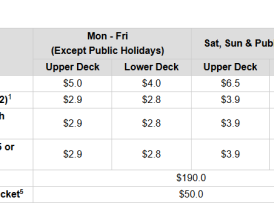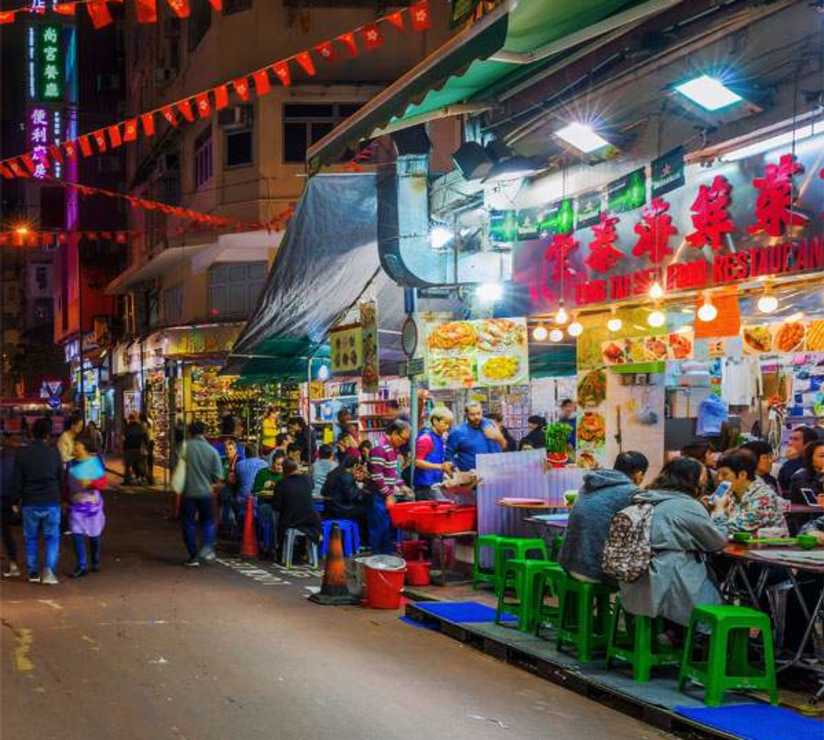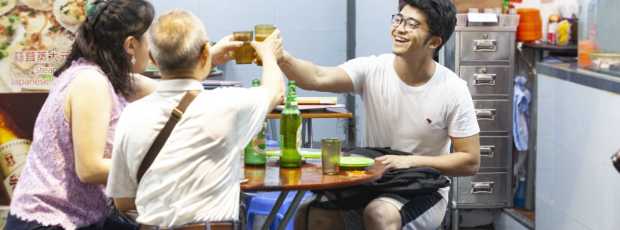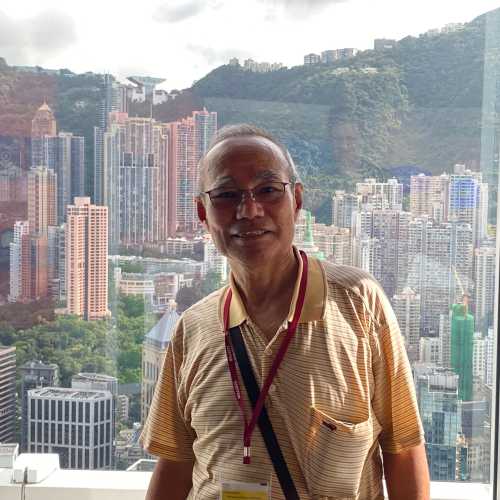Table Of Contents
- The Iconic Spots That Earned Their Fame
- Neighborhood Secrets: Where Locals Live
- Cultural Immersion: Traditions That Endure
- Family Adventures: Creating Lasting Memories
- Natural Escapes: Finding Peace in the City
- Street Life: The Pulse of Hong Kong
- Practical Wisdom: Navigating Hong Kong Like a Local
- Seasonal Celebrations: Timing Your Visit
- Hidden Gems: Local Favorites
- Connecting with Hong Kong's Soul
- Planning Your Hong Kong Adventure
- The Essence of Hong Kong
There's something magical about watching the sun dip behind Hong Kong's towering skyline from my favorite corner table at a dim sum restaurant in the city center. After thirty years of calling this big city home, I've learned that the best things to do in Hong Kong aren't always found in guidebooks. They're discovered in the quiet moments between the rush, in conversations with elderly shopkeepers, and in the gentle rhythm of daily life that pulses beneath the city's vibrant exterior.
This isn't your typical tourist guide. While I'll share the iconic Hong Kong must see attractions that genuinely deserve their reputation, I'm more interested in showing you the layers beneath—the hidden alleys where locals gather for morning tea, the rooftop gardens tucked away from busy streets, and the family-run shops that have weathered decades of change. These authentic experiences form the heart of what makes Hong Kong truly special.

as per: https://www.starferry.com.hk/en/service
The Iconic Spots That Earned Their Fame
Victoria Peak: Beyond the Crowds
Victoria Peak remains one of the most essential things to see in Hong Kong, but most visitors miss its quieter treasures. Yes, the Peak Tram is an experience worth having. That steep climb through the residential areas gives you a real sense of Hong Kong's vertical living. But once you're up there, skip the crowded Sky Terrace and take the circular walk around the summit instead.
I discovered this gentle trail during one of my morning jogs years ago. The path winds through lush vegetation, offering glimpses of the city through the trees that feel more intimate than the panoramic overlooks. Early morning is when the trail belongs to locals; joggers, tai chi practitioners, and dog walkers who nod in recognition as you pass.
For the best views without the crowds, visit just before sunset on weekdays. The golden hour light transforms the harbor into liquid gold, and from the highest point, you'll understand why Victoria Peak has captured hearts for over a century. On clear days, you can even spot aircraft approaching Hong Kong International Airport in the distance, a reminder of this city's role as Asia's gateway.
Victoria Harbour: The City's Liquid Heart
Victoria Harbour is Hong Kong's stage, where the daily drama of one of the world's busiest ports unfolds against a backdrop of architectural marvels. The Symphony of Lights show draws crowds every evening at 8 PM (officially recognized as the world's largest light and sound show) but I prefer the quieter moments. Watching the Star Ferry chug across the water at dawn, or seeing the harbor come alive with the first light of morning from the Kowloon Peninsula side, offers a more intimate connection to this historic waterway.
The Star Ferry has been crossing these waters since 1888, and riding it feels like traveling through time. The green and white vessels carry the weight of Hong Kong's history. They've witnessed the handover, survived wars, and provided daily transport for generations of families. At just HK$5 for adults (Upper deck, on weekdays), it's possibly the world's most affordable scenic cruise.
From the ferry, you see Hong Kong as it was meant to be seen, from the water. The International Commerce Centre rises like a modern lighthouse, while the older buildings along the Kowloon waterfront tell stories of Hong Kong's transformation from British colony to global financial center. This perspective reminds you that Hong Kong grew from the sea, and the harbor remains its beating heart.
Neighborhood Secrets: Where Locals Live
Tsim Sha Tsui: Beyond the Shopping Malls
Tsim Sha Tsui is known for its luxury shopping and tourist attractions, but venture into the side streets and you'll discover a different character entirely. The area between Nathan Road and the harbor hides dozens of narrow alleys filled with local cafés, vintage shops, and family-run businesses that have survived the area's transformation. Tung Choi Street, known locally as the "Ladies Market of Tsim Sha Tsui," buzzes with energy even in early evening when the bright lights begin to illuminate the district.
The Tsim Sha Tsui Promenade offers more than just harbor views. Visit during early morning when local photographers capture the changing light, or in the evening when families gather for picnics. The Avenue of Stars has been redesigned several times, but the real attraction is the way local life unfolds along the water's edge. The Hong Kong Space Museum sits prominently along this waterfront stretch, its distinctive dome shape making it one of the Kowloon side's most recognizable landmarks.
Hong Kong Island: Art, Heritage, and Hidden Corners
Hong Kong Island contains multitudes, from the financial district's gleaming towers to the historic neighborhoods of Sheung Wan and Central. The IFC Mall anchors the central location with luxury shopping, but the island's art scene has exploded in recent years, with galleries tucked into converted warehouses and street art decorating previously bland walls. The Hong Kong Museum of Art, recently renovated, houses impressive collections of Chinese antiquities and contemporary works, including famous paintings that tell the story of Hong Kong's artistic evolution.
In Sheung Wan, I love browsing the antique shops along Hollywood Road. These aren't tourist traps but genuine collectors' havens where you might find Ming Dynasty ceramics next to 1960s Hong Kong movie posters. The shopkeepers are often third-generation dealers who can tell you the provenance of every piece.
The island's vertical neighborhoods reward exploration. Take the historic trams, these double-decker streetcars have been running since 1904 and offer the best way to see how residential Hong Kong lives. The upper deck provides a voyeuristic glimpse into apartment windows and rooftop gardens that most visitors never see.
Looking for a private city experience in Hong Kong?
Explore the city with a local who plans a private day just for you; no groups, no scripts.
Cultural Immersion: Traditions That Endure
Dim Sum: The Art of Shared Mornings
Dim sum in Hong Kong isn't just a meal. It's a social institution that brings families together every weekend morning. The dishes are believed to have originated in the southern China's Guangdong region before eventually making their way to Hong Kong. In Hong Kong, it has evolved into an elaborate weekend ritual that can last for hours.
My family has been going to the same dim sum restaurant in Wan Chai for fifteen years. The servers know our table, our preferences, and our family stories. This is where I learned that proper dim sum isn't about the food alone, it's about the conversations that happen between courses, the gentle teasing of grandparents, and the way multiple generations gather around a lazy Susan. For visitors seeking Michelin-starred dim sum, Tim Ho Wan earned its reputation as the world's cheapest Michelin-starred restaurant, though expect long lines and a more hurried atmosphere than traditional tea houses.
The best dim sum restaurants open early and serve until mid-afternoon. Look for places where locals queue, these establishments have earned their reputation through consistency and quality. Don't be intimidated by the crowds or the apparent chaos; dive in and point to dishes that look appealing. Consider joining a food tour to learn the etiquette and discover hidden gems that even locals might miss. The adventure is part of the experience.
Family Adventures: Creating Lasting Memories
Hong Kong Disneyland: Magic with Local Flavor
Hong Kong Disneyland offers a uniquely Asian Disney experience that blends familiar magic with local touches. The park feels more intimate than its American counterparts, making it perfect for families with young children. The crowds are generally smaller, and the staff speak multiple languages fluently.
What sets Hong Kong Disneyland apart are the cultural adaptations. The park observes Chinese holidays, offers special dim sum character meals, and incorporates feng shui principles into its design. The Halloween celebrations are particularly elaborate, transforming the park into a genuinely spooky experience that local families adore.
Insider tip: visit during weekdays if possible, and download the park's app for real-time wait times. The Mystic Manor attraction is unique to Hong Kong Disneyland and showcases impressive technology that creates truly immersive experiences.
Ocean Park: Conservation Meets Entertainment
Ocean Park holds a special place in Hong Kong hearts. It's been thrilling families since 1977 and has evolved into one of Asia's premier marine life parks. Unlike purely commercial theme parks, Ocean Park focuses heavily on conservation and education, making it feel more purposeful than merely entertaining.
The park's cable car system offers stunning views of the South China Sea, and the aquarium experiences are genuinely world-class. The Giant Panda Adventure showcases the park's commitment to wildlife conservation, while the various roller coasters provide thrills for older children and adults.
What I appreciate most about Ocean Park is how it balances entertainment with education. The marine mammal shows incorporate conservation messages, and the park's research facilities are actively involved in protecting local wildlife. It's entertainment with a conscience.
Natural Escapes: Finding Peace in the City
Lantau Island: Spiritual Journeys and Mountain Air
Lantau Island offers respite from Hong Kong's urban intensity. The island is twice the size of Hong Kong Island but feels worlds away from the city's hustle, with lush mountains and traditional villages that preserve Hong Kong's heritage as an old fishing village. The journey to see the Big Buddha via the Ngong Ping cable car is itself a meditation. The 25-minute ride provides panoramic views of green hills, sea, and airport that remind you of Hong Kong's natural beauty.
The Tian Tan Buddha, completed in 1993, stands 34 meters tall and represents the harmony between man and nature. The climb to reach the statue (268 steps) is a pilgrimage that visitors from around the world undertake. But the real magic happens in the quieter moments around the Po Lin Monastery, where the scent of incense mingles with mountain air. The monastery dates back to 1906, though it was expanded significantly during the Tang Dynasty architectural revival of the 1970s.
Beyond the famous attractions, Lantau Island offers hiking trails that lead to hidden beaches and traditional fishing villages. The Wisdom Path, a series of wooden posts inscribed with Buddhist scripture, provides a peaceful walking meditation with views across the South China Sea.
What if your day in Hong Kong was planned by someone who knows it — and you?
City Unscripted matches you with a local host who creates a private experience based on your interests, not a set route.
Street Life: The Pulse of Hong Kong
Markets That Tell Stories
Hong Kong's street markets are living museums where the city's entrepreneurial spirit comes alive. Each market has its own personality. The Ladies' Market in Mong Kok pulses with energy and offers everything from knock-off designer bags to traditional Chinese medicine, while the Temple Street Night Market transforms into a nocturnal wonderland where fortune tellers read palms by neon light.
Stanley Market on the southern end of Hong Kong Island offers a more relaxed atmosphere with its seaside location and mix of tourist goods and local crafts.
The village market atmosphere varies throughout the week. Weekday mornings bring serious shoppers looking for the freshest ingredients, while weekend evenings attract families and tourists seeking authentic local experiences.
Stanley Market particularly shines on weekend afternoons when the seaside promenade fills with families enjoying fresh seafood at waterfront restaurants.
What fascinates me about these markets is their resilience. They've survived economic downturns, pandemic restrictions, and changing consumer habits by adapting while maintaining their essential character. The vendors often know their customers by name, and relationships built over decades of transactions create a sense of community that online shopping can't replicate.
Practical Wisdom: Navigating Hong Kong Like a Local
Best Times to Visit
Hong Kong's subtropical climate means it's visitable year-round, but each season offers different experiences. Spring (March to May) brings comfortable temperatures and occasional rain showers that clear the air. Summer (June to August) is hot and humid with occasional typhoons, but this is when the city's energy peaks.
Autumn (September to November) offers the best weather. Clear skies, comfortable temperatures, and excellent visibility for photography. Winter (December to February) can be cool, but the crisp air provides the clearest views of the harbor and mountains.
Transportation Tips
The MTR (Mass Transit Railway) is incredibly efficient, but don't overlook Hong Kong's other transport options. The historic trams offer a slow, scenic journey through the city's neighborhoods. The Peak Tram is an attraction in itself, not just transportation. The Star Ferry provides the most romantic way to cross the harbor, while the extensive bus network reaches places the MTR doesn't cover.
Purchase an Octopus Card immediately upon arrival, this electronic payment system works for all public transport, most restaurants, and many shops. It's been operating since 1997 and remains one of the world's most convenient payment systems.
Cultural Etiquette
Hong Kong blends Eastern and Western cultures in ways that can seem contradictory to visitors. English is widely spoken, but learning a few Cantonese phrases shows respect and often results in warmer interactions. Business cards should be received with both hands and examined carefully. Never immediately putting them away shows respect.
Dining etiquette matters, especially during dim sum. Don't point chopsticks at people, and remember that tea is communal, refill others' cups when they're empty. When someone refills your cup, tap the table with two fingers to show thanks.
Spiritual and Cultural Landmarks
Hong Kong's spiritual landscape reflects its multicultural heritage. Wong Tai Sin Temple draws thousands of worshippers who believe in the deity's power to grant wishes, especially those related to healing and prosperity. The temple's colorful architecture and constant stream of incense create an otherworldly atmosphere in the heart of modern Kowloon.
In contrast, Chi Lin Nunnery offers serene Buddhist architecture constructed entirely without nails, following traditional Tang Dynasty-style interlocking techniques. The adjacent Nan Lian Garden provides a peaceful retreat with its classical Chinese landscaping. Chi Lin represents Hong Kong's commitment to preserving traditional culture amid rapid modernization, and visitors enjoy cheap admission to these remarkable cultural sites.
The Happy Valley Racecourse stands as a local institution where horse racing has thrilled crowds since 1845. Wednesday evening races draw locals who come for the excitement, the socializing, and the chance to try their luck. The atmosphere is electric, with the track surrounded by towering apartment buildings whose residents watch races from their balconies.
Island Adventures Beyond Hong Kong Island
Cheung Chau island offers a glimpse of traditional fishing village life just a ferry ride from Central. This car-free island maintains its old fishing village charm with narrow alleys, seafood restaurants, and beaches that feel worlds away from the urban intensity. The island is famous for its annual Bun Festival, a vibrant Taoist celebration with colorful parades and a unique bun-snatching competition. The island is also known for its laid-back atmosphere, fishing village charm, seafood restaurants, sandy beaches, and hiking trails.
Seasonal Celebrations: Timing Your Visit
Traditional Festivals
Hong Kong's festival calendar reflects its multicultural heritage. Chinese New Year transforms the city into a celebration of red and gold, with flower markets, lion dances, and family reunions. The lantern displays are spectacular, but the real magic happens in the residential neighborhoods where families gather for reunion dinners.
Mid-Autumn Festival brings mooncakes and lantern displays to parks across the city. Dragon Boat Festival showcases Hong Kong's maritime heritage with races in the harbor. These celebrations offer glimpses into traditions that have survived Hong Kong's transformation from old fishing village to global financial center. During these festivals, even neighborhoods like Diamond Hill and Hung Hom come alive with community celebrations that showcase local culture.
Modern Events
The Hong Kong Arts Festival, held annually in spring, brings world-class performances to venues across the city. The Wine and Dine Festival combines Hong Kong's love of food with its growing wine culture. These events showcase Hong Kong's position as a cultural hub that bridges East and West. Many visitors time their trips to coincide with these celebrations, though be prepared for busier attractions and the need to hike dragon's back trail early in the morning to avoid crowds during festival seasons.
Tip
We match you with the right host, not just any guide.Want to experience the real Hong Kong with someone who lives there?
A fully private experience, planned and led by a local host who tailors the day to you
Hidden Gems: Local Favorites
Hong Kong's density has created a culture of hidden spaces. Rooftop gardens tucked away from street level, pocket parks squeezed between buildings, and viewing platforms that offer unexpected perspectives. The Choi Hung Estate is famous for its colorful basketball courts that have become Instagram-famous, but the surrounding residential area offers authentic glimpses of Hong Kong housing.
The Western District Community Centre has a rooftop garden that offers harbor views without the crowds. The Hong Kong Park, despite being centrally located, contains quiet corners where locals practice tai chi and elderly residents feed the fish in ornamental ponds.
Culinary Adventures Beyond Dim Sum
While dim sum gets most of the attention, Hong Kong's culinary scene offers incredible diversity. The cha chaan tengs (tea restaurants) serve Hong Kong-style Western food with local adaptations. Pineapple buns, milk tea, and noodle soups that represent the city's cultural fusion.
Street food vendors still operate in traditional markets, offering curry fish balls, and stinky tofu which have been popular snacks for decades. These foods represent Hong Kong's working-class heritage and remain affordable comfort food for locals.
Local Neighborhoods Worth Exploring
Sham Shui Po remains one of Hong Kong's most authentic neighborhoods, where electronics markets, fabric shops, and traditional restaurants create a vibrant street life. The area hasn't been gentrified like other parts of the city, making it feel more like the Hong Kong of previous decades.
Tai Kwun, the former Central Police Station, has been transformed into a heritage and arts complex that tells Hong Kong's law enforcement history while showcasing contemporary art. The restoration preserved the colonial architecture while adding modern galleries and performance spaces.
Connecting with Hong Kong's Soul
Understanding the City's Rhythm
Hong Kong operates on multiple rhythms simultaneously. The financial district pulses with global market schedules, while traditional neighborhoods follow older patterns of morning markets, afternoon tea, and evening gatherings. Understanding these rhythms helps visitors experience the city more authentically.
The city's work-life balance differs from Western expectations. Long working hours are common, but family time remains precious. Weekend dim sum, evening harbor walks, and holiday trips to nearby destinations like Macau represent how locals create balance in their lives.
Building Connections
Hong Kong people are generally friendly but reserved with strangers. However, showing genuine interest in local culture and demonstrating respect for traditions opens doors to meaningful interactions. Learn to pronounce place names correctly, show curiosity about local customs, and don't be afraid to ask questions.
Many locals are eager to share their favorite spots with visitors who show genuine interest. Some of my best recommendations have come from casual conversations with taxi drivers, shopkeepers, and fellow diners who were delighted to share their Hong Kong with someone who wanted to understand the city beyond its surface attractions.
Planning Your Hong Kong Adventure
Creating Your Itinerary
The best Hong Kong experiences combine planned activities with spontaneous discoveries. Book tickets for major attractions like Hong Kong Disneyland and Ocean Park in advance, but leave time for wandering through neighborhoods and following interesting streets to see where they lead.
Consider taking tours from Hong Kong to nearby destinations like Macau or mainland China cities, which can provide context for Hong Kong's unique position as a gateway between East and West. These day trips help you understand Hong Kong's role in the region's history and development.
Accommodation Considerations
Location matters more than luxury when choosing where to stay. Areas like Central, Tsim Sha Tsui, and Causeway Bay offer convenient access to attractions and transportation, while neighborhoods like Sheung Wan and Wan Chai provide more authentic local experiences.
Hong Kong's hotel rooms are famously small, but the city's excellent public transportation means you'll spend most of your time exploring rather than in your room. Consider proximity to MTR stations more important than room size when making your choice.
Budget Planning
Hong Kong can be expensive, but budget-conscious travelers can find value through careful planning. Street food and local restaurants offer excellent meals at reasonable prices, while attractions like the Star Ferry and hiking trails provide memorable experiences for minimal cost.
The city's public transportation is efficient and affordable, making it unnecessary to rely on taxis except for convenience. Many of Hong Kong's best experiences, harbor views, hiking trails, and neighborhood exploration are free or very inexpensive.
Ready to plan your perfect day in Hong Kong?
Start your experienceThe Essence of Hong Kong
After three decades of calling Hong Kong home, I've learned that the city reveals itself slowly, in layers. The must see in Hong Kong attractions provide the framework, but the real magic happens in the spaces between. In conversations with shopkeepers, in the rhythm of morning commutes, and in the way different generations of families navigate this vertical city together.
The things to do and see in Hong Kong that I've shared here represent both the obvious and the overlooked, the famous and the hidden. But remember that Hong Kong is constantly evolving, and part of its charm lies in its ability to surprise even longtime residents like myself.
Whether you're drawn by the harbor views, the culinary adventures, or the cultural fusion that makes Hong Kong unique, approach the city with curiosity and openness. The best what to see in Hong Kong experiences aren't just attractions to check off a list. They're invitations to understand a place where East meets West, where tradition and innovation dance together, and where every street corner holds the possibility of discovery.
Hong Kong has given me a lifetime of memories, and I hope this guide helps you create your own. The city is waiting to share its secrets with those who take the time to look beyond the surface and discover the heart that beats beneath the neon lights and towering skyscrapers.
What if your day in Hong Kong was planned by someone who knows it — and you?
City Unscripted matches you with a local host who creates a private experience based on your interests, not a set route.
Want to experience the real Hong Kong with someone who lives there?
A fully private experience, planned and led by a local host who tailors the day to you










